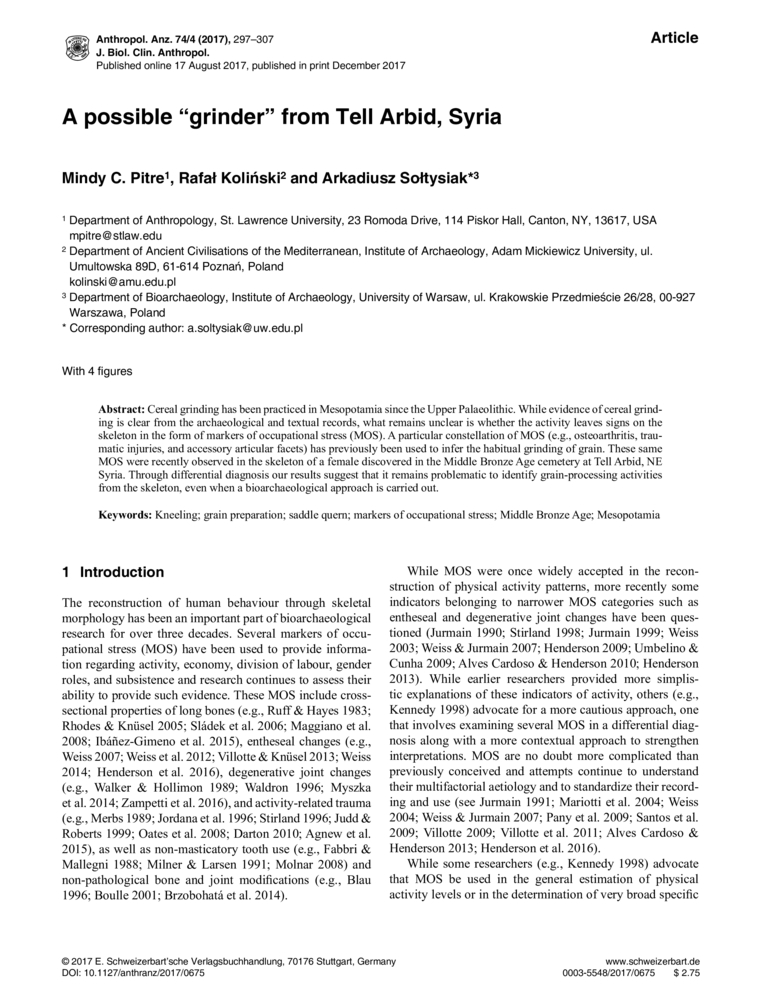Contribution
A possible “grinder” from Tell Arbid, Syria
Pitre, Mindy C.; Koliński, Rafał; Sołtysiak, Arkadiusz

Anthropologischer Anzeiger Volume 74 No. 4 (2017), p. 297 - 307
publié: Dec 1, 2017
publication en ligne: Aug 17, 2017
manuscrit accepté: Jun 12, 2017
revision du manuscrit reçu: May 25, 2017
révision du manuscrit demandée: Sep 7, 2016
manuscrit reçu: Jun 14, 2016
DOI: 10.1127/anthranz/2017/0675
ArtNo. ESP140007404003, Prix: 29.00 €
Abstract
Abstract Cereal grinding has been practiced in Mesopotamia since the Upper Palaeolithic. While evidence of cereal grinding is clear from the archaeological and textual records, what remains unclear is whether the activity leaves signs on the skeleton in the form of markers of occupational stress (MOS). A particular constellation of MOS (e.g., osteoarthritis, traumatic injuries, and accessory articular facets) has previously been used to infer the habitual grinding of grain. These same MOS were recently observed in the skeleton of a female discovered in the Middle Bronze Age cemetery at Tell Arbid, NE Syria. Through differential diagnosis our results suggest that it remains problematic to identify grain-processing activities from the skeleton, even when a bioarchaeological approach is carried out.
Mots-clefs
Kneeling • grain preparation • saddle quern • markers of occupational stress • Middle Bronze Age • Mesopotamia